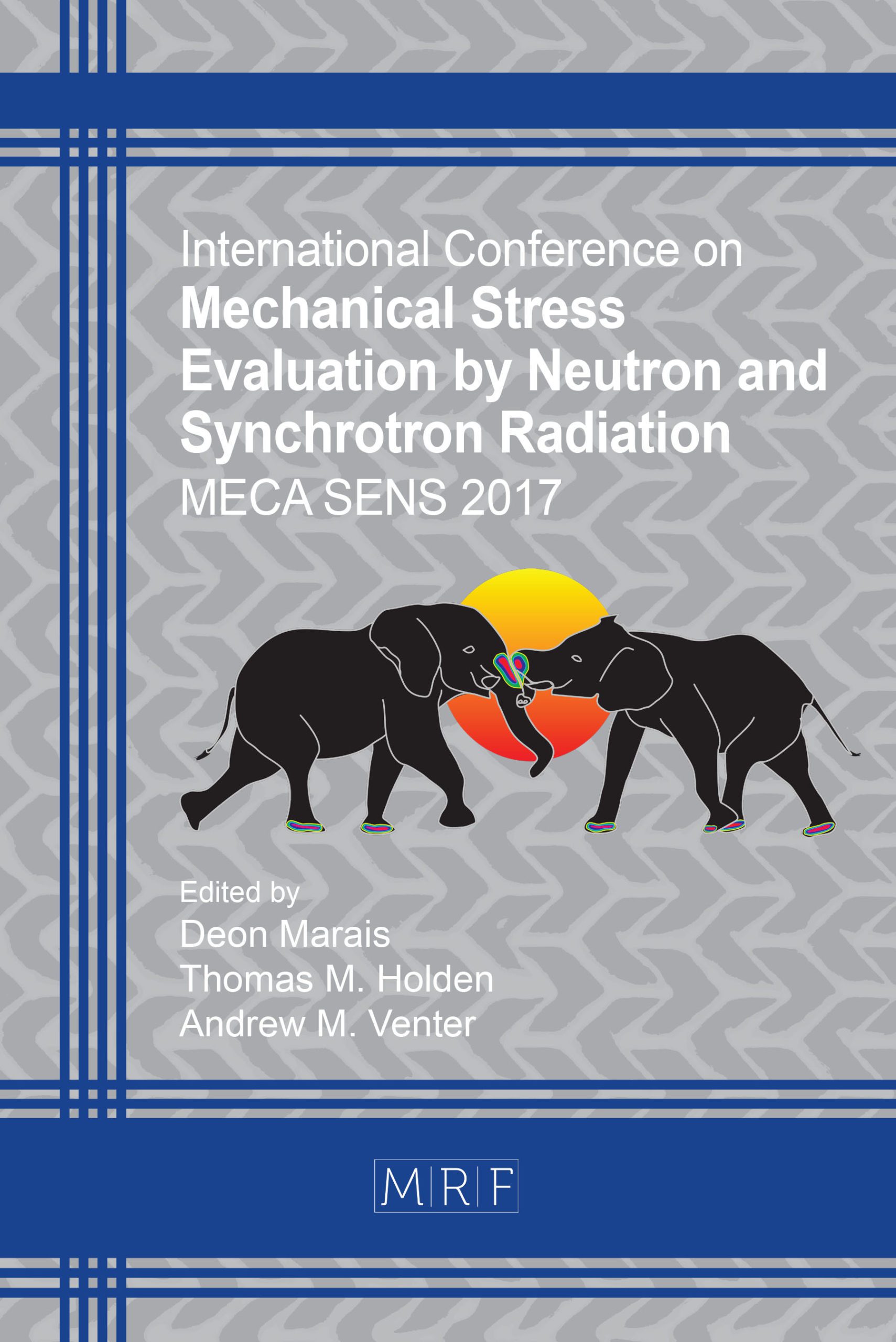Measurement of Residual Stresses in Different Thicknesses of Laser Shock Peened Aluminium Alloy Samples
S.N van Staden, C. Polese, D. Glaser, J.-P. Nobre, A.M. Venter, D. Marais, J. Okasinski, J.-S. Park
download PDFThis study focused on depth-resolved residual stress results determined with a number of complementary techniques on Laser Shock Peening (LSP) treated aluminium alloy 7075-T651 samples with different thicknesses (6 mm and 1.6 mm). Samples were prepared from a single commercially produced rolled plate that was then treated with LSP. Residual stresses were measured using Laboratory X-Ray Diffraction (LXRD), Incremental Hole Drilling (IHD), Neutron Diffraction (ND) and Synchrotron XRD (SXRD). The LSP treatment resulted in the establishment of compressive residual stresses that varied rapidly in the near surface region. The compressive stresses extended up to 1.5 mm in depth in the 6 mm thick sample. Some surface stress relaxation was observed in the first 25 μm, but substantially large stresses existed at 50 μm. This investigation strongly motivated why residual stress profiles should be obtained using a variety of techniques.
Keywords
Laser Shock Peening, Aluminium, Residual Stress, Incremental Hole Drilling, X-ray Diffraction, Synchrotron, Energy-Dispersive, Neutron Diffraction
Published online 4/20/2018, 6 pages
Copyright © 2018 by the author(s)
Published under license by Materials Research Forum LLC., Millersville PA, USA
Citation: S.N van Staden, C. Polese, D. Glaser, J.-P. Nobre, A.M. Venter, D. Marais, J. Okasinski, J.-S. Park, ‘Measurement of Residual Stresses in Different Thicknesses of Laser Shock Peened Aluminium Alloy Samples’, Materials Research Proceedings, Vol. 4, pp 117-122, 2018
DOI: http://dx.doi.org/10.21741/9781945291678-18
The article was published as article 18 of the book
![]() Content from this work may be used under the terms of the Creative Commons Attribution 3.0 licence. Any further distribution of this work must maintain attribution to the author(s) and the title of the work, journal citation and DOI.
Content from this work may be used under the terms of the Creative Commons Attribution 3.0 licence. Any further distribution of this work must maintain attribution to the author(s) and the title of the work, journal citation and DOI.
References
[1] K. Ding and L. Ye, Laser Shock Peening Performance and Process Simulation, Woodhead Publishing Limited, Cornwall, 2006. https://doi.org/10.1201/9781439823620
[2] T. Adachi et al., Effect of laser peening on fatigue properties for aircraft structure parts, in: International Conference on Shot Peening, 2008.
[3] Y. Sano et al., Retardation of crack initiation and growth in austenitic stainless steels, Materials Science and Engineering A, 417 (2006) 334-340. https://doi.org/10.1016/j.msea.2005.11.017
[4] Q. Yu et al., Bending deformation of laser peened aluminium alloy with uniform rectangular spots, Materials Science and Technology, 32 (2016) 9-14. https://doi.org/10.1179/1743284715Y.0000000057
[5] C. A. Rodopoulos et al., Effect of controlled shot peening and laser shock peening on the fatigue performance of 2024-T351 aluminum alloy, Journal of Materials Engineering and Performance, 12(4) (2003) 414-419. https://doi.org/10.1361/105994903770342944
[6] N. Rossini et al., Methods of measuring residual stresses in components, Materials and Design, 32 (2012) 572-588. https://doi.org/10.1016/j.matdes.2011.08.022
[7] ASTM, ASTM E837 – 13a Standard test method for determining residual stresses by the hole-drilling strain-gage method, ASTM International, West Conshohocken, 2013.
[8] E. Valentini, A. Benincasa and L. Bertelli, Residual stress calculation using the incremental hole-drilling method with eccentric holes: the eval software, in: Associazione Italiana Per L’analisi Delle Sollecitazioni 43° Convegno Nazionale, Rimini, 2014.
[9] P. C. Brand and H. J. Prask, New methods for the alignment of instrumentation for residual-stress measurements by means of neutron diffraction, Journal of Applied Crystallography, 27 (1994) 164-176. https://doi.org/10.1107/S0021889893007605
[10] A. M. Venter, D. Marais and V. Luzin, Benchmarking studies of the MPISI Material Science Diffractometer at SAFARI-1, Materials Research Proceedings 2 (2016) 413-418.
































